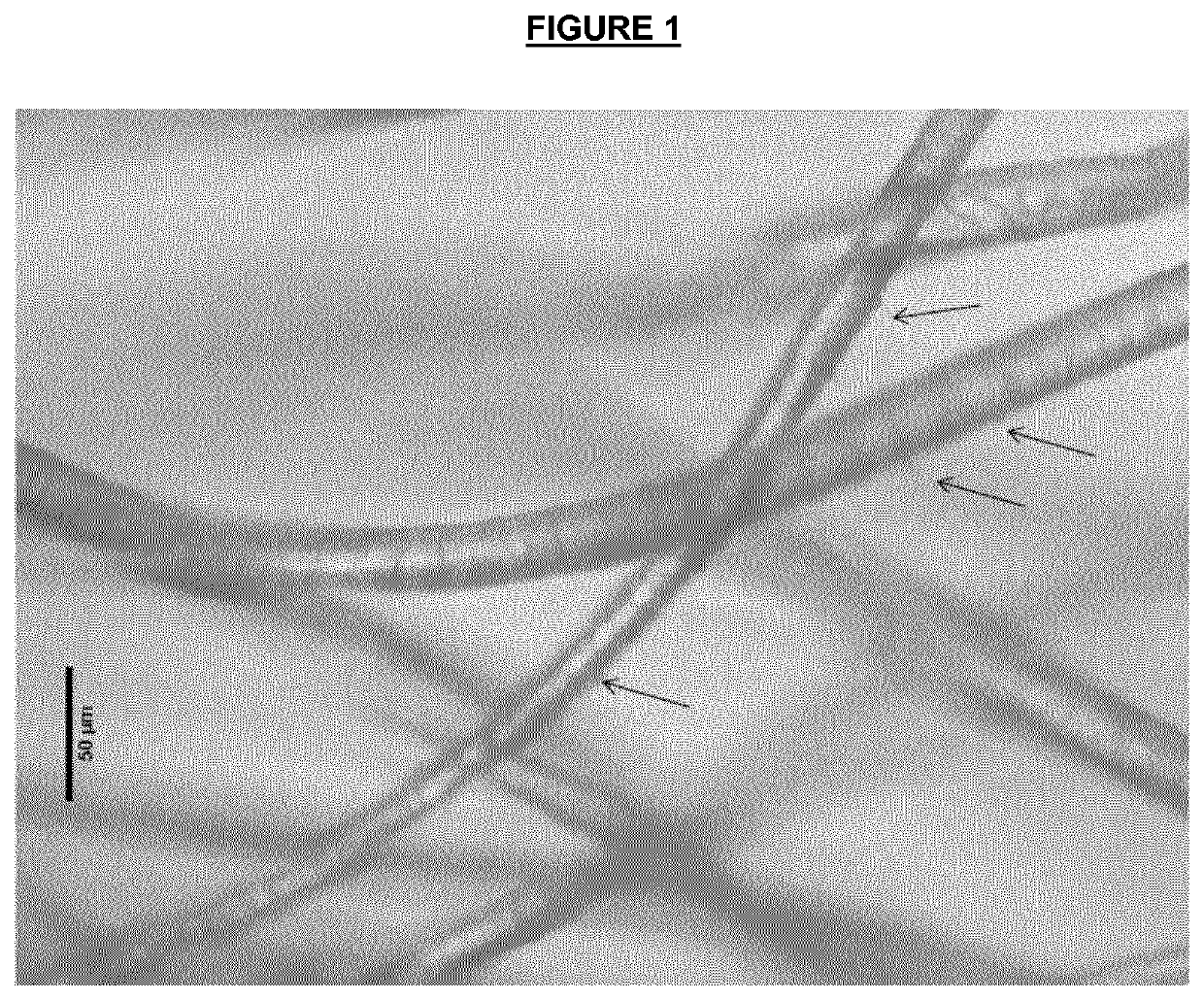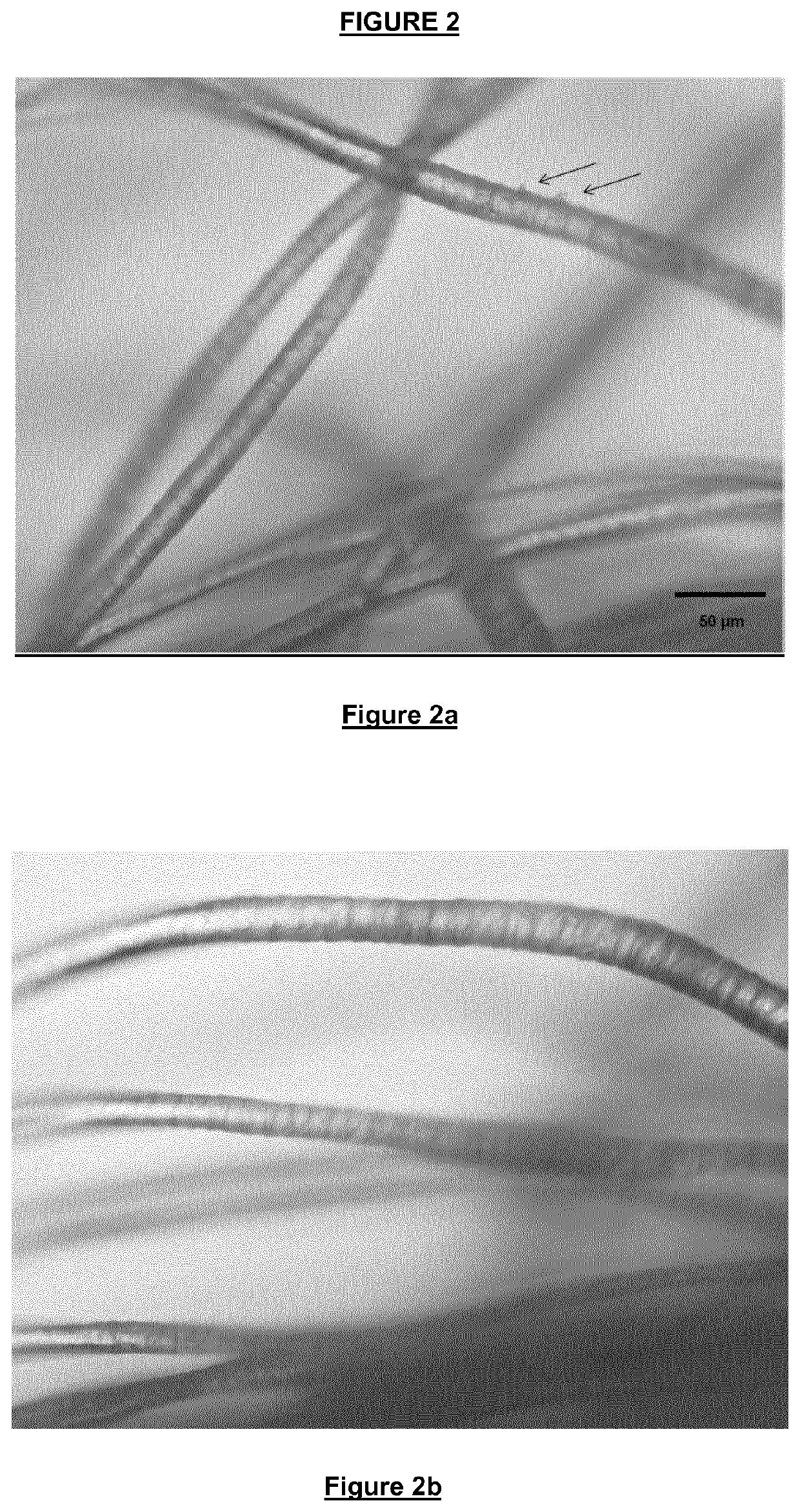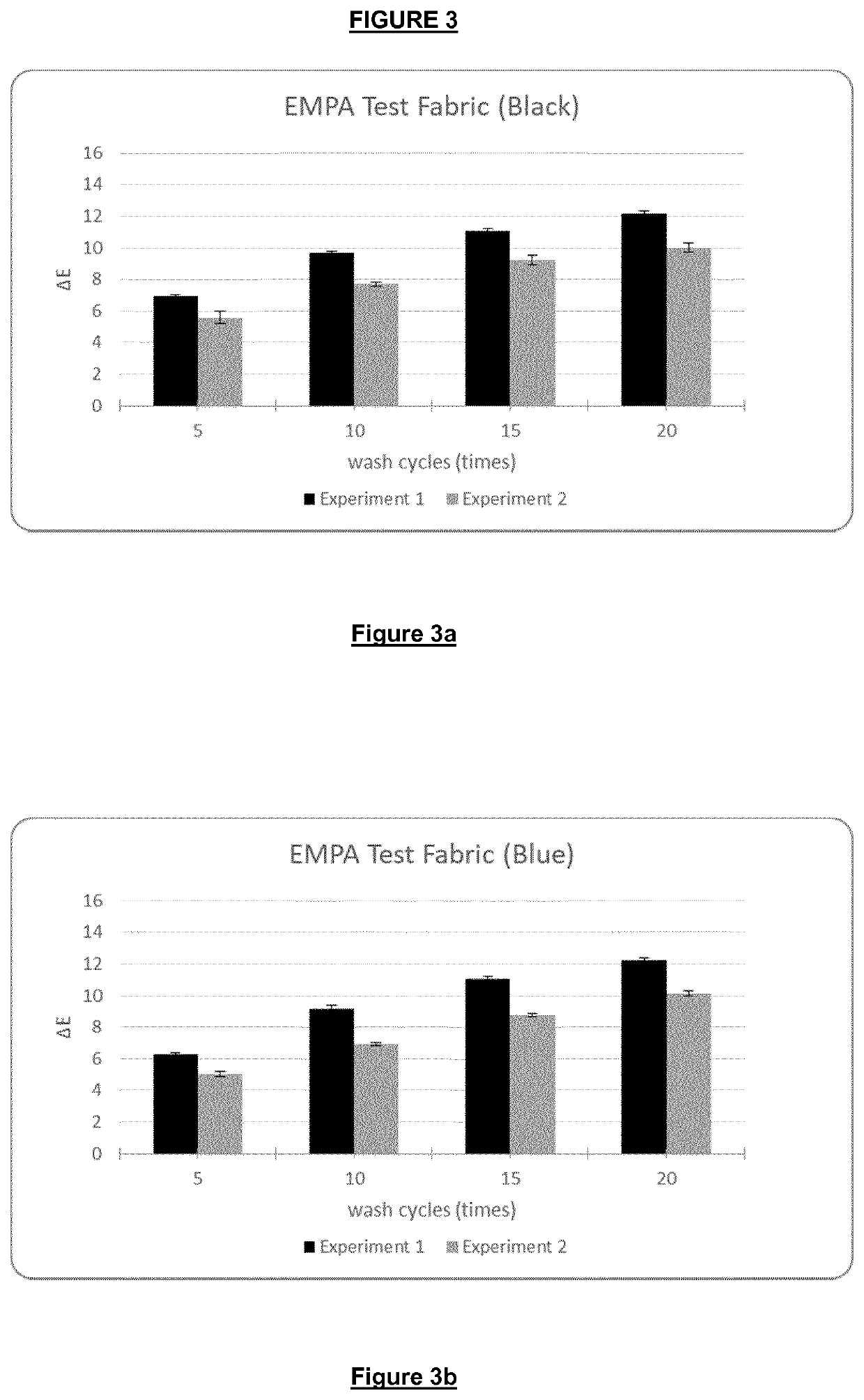Method for treating fabrics
- Summary
- Abstract
- Description
- Claims
- Application Information
AI Technical Summary
Benefits of technology
Problems solved by technology
Method used
Image
Examples
example 1
Procedures
[0152]The fabrics were rubbed with hand to induce damage. The damage was then recorded with optical microscopy with 4 to 40× magnification.
[0153]The damaged fabrics were soaked in aqueous solutions (DI water) which contains Cationic Polygalactomannan 1 at a concentration of 0 ppm, 20 ppm, 40 ppm, and 80 ppm, respectively. The soaking was for 30 min with stirring at room temperature. The fabrics were then dried in an oven at 45° C. overnight.
[0154]The treated fabrics were observed under optical microscope to evaluate the level of damage.
[0155]As evidenced by microscopy, reduction in fabric degradation is perceivable.
[0156]Fabric fibers that have been treated with Cationic Polygalactomannan 1 look smoother and less fibrils were found, compared to untreated fabric fibers (0 ppm group).
[0157]As depicted in FIG. 1, fabrics treated with the DI water exhibited fibrils on fiber surface under the microscopy, indicating damage to the fabrics.
[0158]As depicted in FIG. 2a, fabrics tre...
example 2
Wash Protocols
[0161]The test fabrics (in black, blue, red and green colors) were placed in Samsung front load washing machine (model: WW90H5200EW / SP) with washing program for cotton (washing temperature: 40° C. and washing time: 2 hours 42 min which includes 3 rinses with 1200 RPM spin);
[0162]Ballast load is 2.5 kg knitted cotton ballast load;
[0163]Liquid detergent was added in an amount of 35 mL per wash;
[0164]100 mL Cationic Polygalactomannan 1 (1% solution in water) was added, in other words 1 gram Cationic Polygalactomannan 1 per wash;
[0165]the test fabrics were washed for 5, 10, 15, and 20 cycles respectively.
[0166]For the above wash protocols, for each test fabric in black, blue, red and green colors, Cationic Polygalactomannan 1 was added, which were donated as Experiment 2. As a blank control, the test fabrics were washed without adding Cationic Polygalactomannan 1, which were donated as Experiment 1. For each test fabric, ΔE was determined with spectrophotometer as below:
[0...
PUM
| Property | Measurement | Unit |
|---|---|---|
| Temperature | aaaaa | aaaaa |
| Viscosity | aaaaa | aaaaa |
| Viscosity | aaaaa | aaaaa |
Abstract
Description
Claims
Application Information
 Login to View More
Login to View More - R&D
- Intellectual Property
- Life Sciences
- Materials
- Tech Scout
- Unparalleled Data Quality
- Higher Quality Content
- 60% Fewer Hallucinations
Browse by: Latest US Patents, China's latest patents, Technical Efficacy Thesaurus, Application Domain, Technology Topic, Popular Technical Reports.
© 2025 PatSnap. All rights reserved.Legal|Privacy policy|Modern Slavery Act Transparency Statement|Sitemap|About US| Contact US: help@patsnap.com



